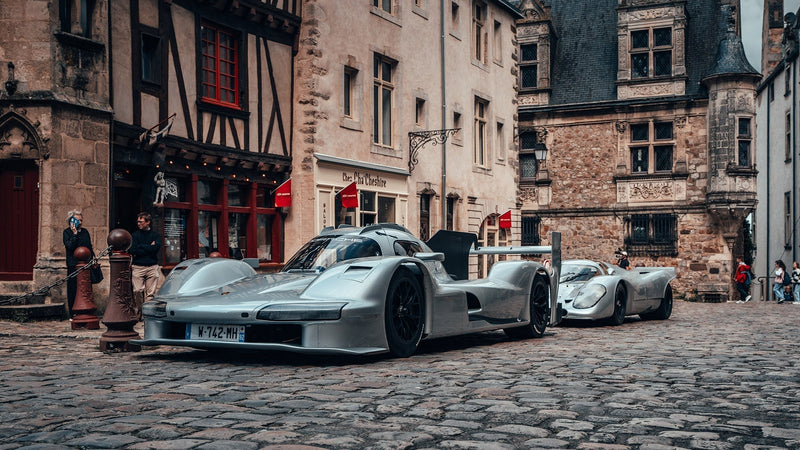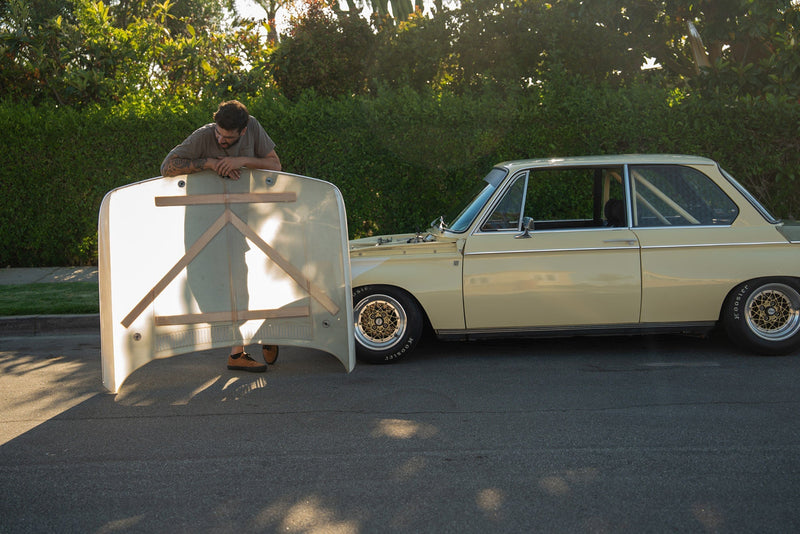Although it’s only a matter of time before the holiday adverts appear, the British “car season” event schedule finally got going again last week, with the opening salvo being appropriately fired up from the grounds of The Honourable Artillery Company in central London.
If you’d asked me a earlier this summer about the odds of the concours taking place this year I’d have called them slim, but thanks to some improved sanitary circumstances the organizers were able to pull it off. The London Concours was especially sweet this year, its positive energy and entry list of exquisitely beautiful and brutally purposeful cars were a welcome salve to the enthusiasts who’ve been itching for a show to attend in the city. But given any other year, this would still be a special gathering of cars. This concours isn’t the largest or most historic of its kind, but it seems to be increasingly attuned to what attendees of these events are really interested in. In other words, mixed between the age-old favorites of the show circuit you can just as easily find hot rods, rally cars, hyper cars, and Aston Martin Lagondas.




The location has always assumed somewhat surreal for a car show—instead of being cordoned by temporary fencing or sprawling greens, you’re encased in London. It’s a green patch of field like any other, but it’s surrounded by big slabs of residential and high-rise buildings that provide the cars on display with the rare backdrop that photographers won’t want to crop out or obscure through creative composition and focal length playfulness.




The streets surrounding Artillery Garden give absolutely no indication of what lies just beneath a wall of typical City architecture. This is, since 1641, the home of the Honourable Artillery Company, established in 1537. Needless to say, it seems the guns lining the premises are likely not going anywhere. Entering this place is to step into a period painting that someone’s bordered with a modern skyline. It’s all a bit science fiction, a blend of times reminiscent of David Bowman’s brightly lit bedroom at the end of the wormhole.








But to those of us who enjoyed the gathering last week, the place was simply a bubble of joy, a fun reprieve where we could leave the anxieties of the times at the front gate. Granted, the venue felt much more welcoming on Thursday, the second and final day of the event, than it felt on Wednesday, when we were exposed to the most British of weather with an assortment of rain, fog, and temperatures worthy of November. Thankfully, our spirits, and the grass, endured. It just took a little longer for some of those convertible tops to finally come down.

The juxtapositions were not limited to the architecture though, as the cars on display presented an assortment of modern street car swagger, post-war coachbuilding history, and motorsport proficiency separated only by a few footsteps or a little swiveling. Luxurious Astons mixed in with rally-bred Lancias, a McLaren Senna shared the stage with an effortlessly cool Facel Vega HK500. There was an assortment of Dinos nearby the less-curvaceous examples of Italian design like the Lamborghini Countach and its engine-bearing off-road relative, the LM002. Indeed almost every breed of bull was shown, from the aforementioned, to Miuras, Espadas, and on the modern side of classic, the Diablo.



The aim of the show’s revolving ten prize classes is to highlight what’s current and cool in the world of collector cars, and this year’s celebrated collector was none other than legendary car designer Ian Callum. Callum has a strong resume of OEM work of course, but his more recent modified Jaguars and Astons have added another talking point to the discussion about authenticity; if the chief designer modifies his old designs to better suit his initial intent, what constitutes the best incarnation of the original idea? Is it the production version that was first manifested as a real car? What if the follow-up is less compromised and more in line with the first vision? There are no definitive answers, but it’s fun to play around with the idea.
At any rate, there is no question that the Speed of Sand crew are advocates of modifying the original design. These guys are the VHRA hot-rodders that make the Pendine Sands races possible, taking their highly “tinkered-with” American machines over the 100mph mark on the Welsh tidal beaches where so many speed records were broken back in the day.



Continuing the subject of originality, the issue of race car restoration is a contentious one. If you are going to enter historic events there is the very real matter of safety to consider, to say nothing of replacing parts from wear, tear, and costly paint-swapping maneuvers. But if you aren’t planning to do anything in motion, what’s the point of removing the history through a restoration? It really comes down to a car by car basis. When it comes down to pure aesthetics however, I’d take a patina-heavy original livery over a perfect restoration every time.
I think we can agree that period correct is something to strive for in most cases, whether it be preservation of race cars or the hobby of collecting automobilia and other ephemera of the time. In this case we were treated to a strong lineup of rallying royalty from Lancia, as well as pleasant surprises like Astons with meticulously clean and correct interiors right down to the maps and travel atlases one will surely need for time traveling.





A particular standout for fans of British racing history was a C-type Jaguar once shared with Stirling Moss, wearing its 1953 Mille Miglia livery. It’s hard not to fall in love with these cars when you start picturing where they’ve been and what they’ve done in their youths. On the modern side of things, Lotus brought a bright yellow Evija to brighten the day, and representing the world of continuations and recreations was Jaguar’s XK SS and XJ13, along with an Autodelta inspired Alfa Romeo 105-series coupe.









Out of all this, and many more that I will leave you the pleasure of discovering by browsing though the shots, the judges had to pick an overall winner. This year the award went to a 1967 Ferrari 330GTS, which I had the pleasure of capturing just as it was leaving to rejoin the more mundane traffic on its brief trip back into safe keeping. In due time, we all followed suit, returning to our more isolated than usual lives once again. Let’s hope the social distancing measures will grant us a situation where we can get out and enjoy cars together more often, rain or shine.


























































